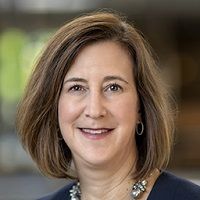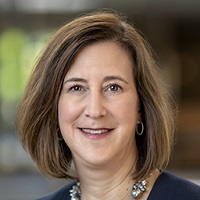SECURE 2.0 Act Now Helps Lighten the Burden of Student Loans
Employers can attract talented employees with a new benefit: a matching contribution to an employee's 401(k) when they make payments on their student debt.


Across the country, employers are competing fiercely for talent. According to recent data from the U.S. Chamber of Commerce, more than 34 million workers quit their jobs in 2023. Young people, in particular, are switching companies — or careers — if it means a higher paycheck or better hours.
Employers worried about recruiting and retaining employees have a new tool at their disposal, thanks to a federal law that went into effect at the start of the year. As of January 1, the SECURE 2.0 Act permits employers to "match" any payments their employees make toward their student loan balances with tax-advantaged contributions to their retirement accounts.
Employers should take advantage. Doing so can allow them to make a difference in their employees' financial security now and in the future. And that can make them an attractive destination for talent.
From just $107.88 $24.99 for Kiplinger Personal Finance
Become a smarter, better informed investor. Subscribe from just $107.88 $24.99, plus get up to 4 Special Issues

Sign up for Kiplinger’s Free Newsletters
Profit and prosper with the best of expert advice on investing, taxes, retirement, personal finance and more - straight to your e-mail.
Profit and prosper with the best of expert advice - straight to your e-mail.
Student loan debt load is heavy
Student debt is a millstone for American workers. The nation's collective student debt load is roughly $1.73 trillion, according to the Federal Reserve. On average, borrowers pay between $200 and $299 monthly toward student loans.
That debt burden weighs on their mental and financial health.
A recent survey from Morning Consult found that more than nine in 10 young adults who continued with education after high school faced stress over money and finances that affected their physical and mental wellness. Of that group, 86% said student loans were a contributor to that stress.
Nearly half said student debt impacted the amount of money they contributed to their 401(k)s. Of that group, more than four in 10 said student loan debt caused them to withdraw money from their retirement accounts.
Those kinds of decisions can have severe long-term consequences. Just $10,000 contributed at age 25 grows into more than $100,000 by age 65, assuming a 6% annual return. Waiting until age 35 to set aside that money drives the total return at age 65 to just $57,000.
Young workers are looking for employers who can help them overcome that math. According to the Morning Consult survey, seven in 10 said they were very interested in a workplace benefits plan that offered contributions to a 401(k) if an employee made payments on their student loans.
That's more than the share who said they were very interested in hybrid work, paid family or parental leave or help with childcare costs.
Further, over half of those surveyed indicated that a 401(k) contribution for student debt repayment would have a "significant impact on their decision if choosing between multiple job offers."
What young adults are looking for
In other words, the new benefits authorized by SECURE 2.0 are exactly what young adults are looking for. Rarely do businesses have the chance to simultaneously tackle a pressing societal problem and expand their pool of talent.
There's already real-world evidence demonstrating how effective these programs can be. As of 2021, nearly one in five U.S. companies — including Google and Hulu — offered some form of student loan assistance to employees. This assistance includes enabling employees to cash in unused vacation time and apply it to their student loans and giving employees with school debt money to put toward their loans.
Abbott implemented a first-of-its-kind program in 2018 when we launched Freedom 2 Save with special dispensation from the IRS. This program inspired the student loan provision of SECURE 2.0.
Under Freedom 2 Save, employees who apply at least 2% of their salary toward paying down their student loans receive a 5% company contribution into their 401(k) annually. Over 2,800 Abbott employees have enrolled and received more than $7 million in total contributions to their 401(k)s.
Paying down significant amounts of student debt
Employees who participate in the program overwhelmingly say it makes them feel that we care about them as people, not just workers. Some have paid down as much as $60,000 in debt in just a few years.
The program also aids a diverse set of graduates, with over one-third of enrollees using it to pay off loans from a non-bachelor's degree.
Our experience can serve as a blueprint for companies planning on taking advantage of the flexibility offered by SECURE 2.0.
Student debt relief initiatives can aid not just workers but employers, too. They should resolve to make them part of their recruitment and retention strategy this year.
Related Content
- 529s: No Longer the Ho-Hum Investing Device for College
- Four Options for Saving for Your Newborn’s Future
- Three Reasons You Need to Use a 529 Plan (and Two Reasons You Don't)
- Biden Cancels $1.2 Billion in Student Loan Debt: What to Know
- Student Loan Borrowers to See Better Protections Under New Rules
Profit and prosper with the best of Kiplinger's advice on investing, taxes, retirement, personal finance and much more. Delivered daily. Enter your email in the box and click Sign Me Up.

Mary Moreland is Executive Vice President, Human Resources at Abbott. Prior to assuming this role in August 2019, she served as Divisional Vice President, Compensation and Benefits. She joined Abbott in 2011 as Divisional Vice President, Global Retirement Programs and Human Resources Mergers and Acquisitions. Mary advocates on behalf of Abbott employees around the world — from those on the manufacturing lines to scientists working on the company’s breakthrough inventions.
-
 Fed's Rate Cuts Could Have Impacts You Might Not Anticipate
Fed's Rate Cuts Could Have Impacts You Might Not AnticipateUnderstanding how lower interest rates could impact your wallet can help you determine the right financial moves to make.
-
 Past Performance Is Not Indicative of Your Adviser's Expertise
Past Performance Is Not Indicative of Your Adviser's ExpertiseMany people find a financial adviser by searching online or asking for referrals from friends or family. This can actually end up costing you big-time.
-
 I'm want to give my 3 grandkids $5K each for Christmas.
I'm want to give my 3 grandkids $5K each for Christmas.You're comfortably retired and want to give your grandkids a big Christmas check, but their parents are worried they might spend it all. We ask the pros for help.
-
 I'm a Financial Adviser: The Fed's Rate Cuts Could Have Impacts You Might Not Anticipate
I'm a Financial Adviser: The Fed's Rate Cuts Could Have Impacts You Might Not AnticipateUnderstanding how lower interest rates could impact your wallet can help you determine the right financial moves to make.
-
 Past Performance Is Not Indicative of Your Financial Adviser's Expertise
Past Performance Is Not Indicative of Your Financial Adviser's ExpertiseMany people find a financial adviser by searching online or asking for referrals from friends or family. This can actually end up costing you big-time.
-
 I'm a Financial Planner: If You're Not Doing Roth Conversions, You Need to Read This
I'm a Financial Planner: If You're Not Doing Roth Conversions, You Need to Read ThisRoth conversions and other Roth strategies can be complex, but don't dismiss these tax planning tools outright. They could really work for you and your heirs.
-
 Could Traditional Retirement Expectations Be Killing Us? A Retirement Psychologist Makes the Case
Could Traditional Retirement Expectations Be Killing Us? A Retirement Psychologist Makes the CaseA retirement psychologist makes the case: A fulfilling retirement begins with a blueprint for living, rather than simply the accumulation of a large nest egg.
-
 I'm a Financial Adviser: This Is How You Can Adapt to Social Security Uncertainty
I'm a Financial Adviser: This Is How You Can Adapt to Social Security UncertaintyRather than letting the unknowns make you anxious, focus on building a flexible income strategy that can adapt to possible future Social Security changes.
-
 I'm a Financial Planner for Millionaires: Here's How to Give Your Kids Cash Gifts Without Triggering IRS Paperwork
I'm a Financial Planner for Millionaires: Here's How to Give Your Kids Cash Gifts Without Triggering IRS PaperworkMost people can gift large sums without paying tax or filing a return, especially by structuring gifts across two tax years or splitting gifts with a spouse.
-
 'Boomer Candy' Investments Might Seem Sweet, But They Can Have a Sour Aftertaste
'Boomer Candy' Investments Might Seem Sweet, But They Can Have a Sour AftertasteProducts such as index annuities, structured notes and buffered ETFs might seem appealing, but sometimes they can rob you of flexibility and trap your capital.
-
 Quick Question: Are You Planning for a 20-Year Retirement or a 30-Year Retirement?
Quick Question: Are You Planning for a 20-Year Retirement or a 30-Year Retirement?You probably should be planning for a much longer retirement than you are. To avoid running out of retirement savings, you really need to make a plan.